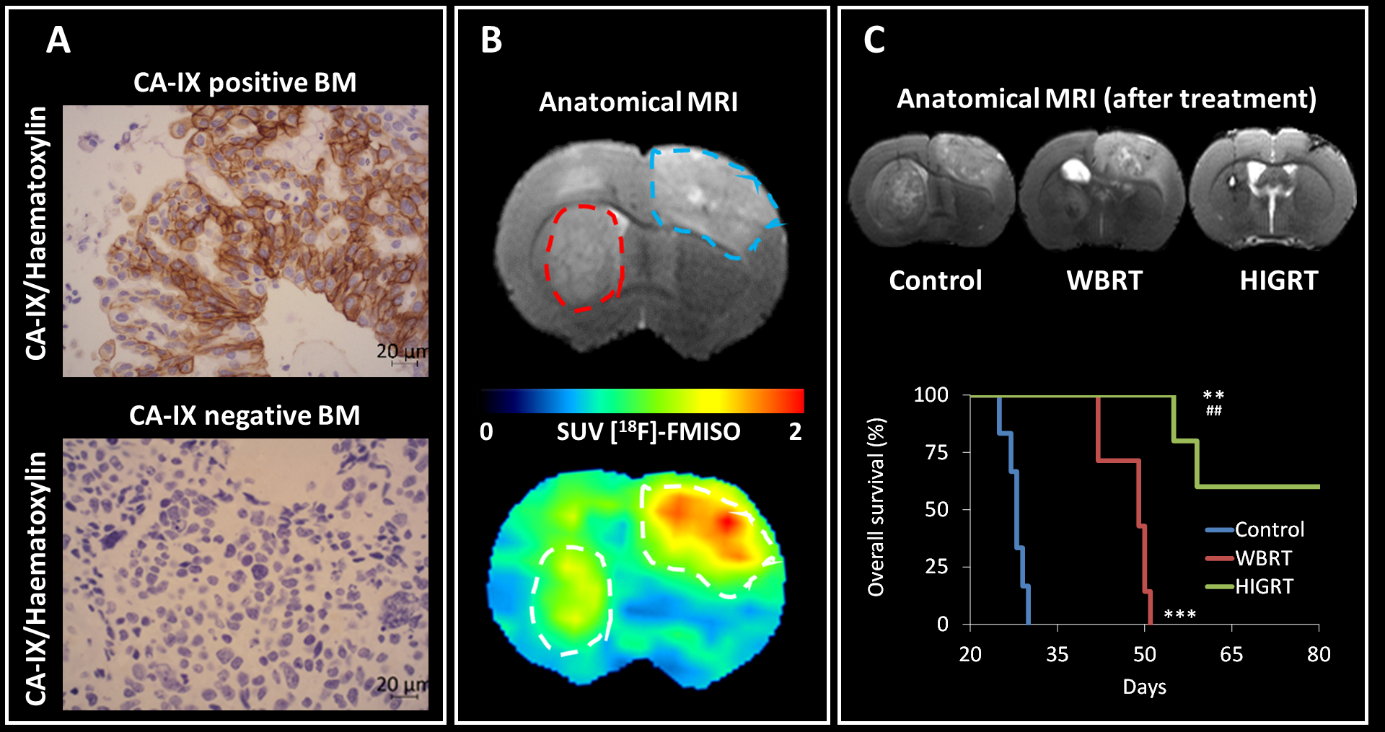Corroyer-Dulmont A, Valable S, Fantin J, Chatre L, Toutain J, Teulier S, Bazille C, Letissier E, Levallet J, Divoux D, Ibazizène M, Guillouet S, Perrio C, Barré L, Serres S, Sibson NR, Chapon F, Levallet G, Bernaudin M
Multimodal evaluation of hypoxia in brain metastases of lung cancer and interest of hypoxia image-guided radiotherapy
Sci. Rep. 2021 11(1):11239
La prise en charge des patients atteints de métastases cérébrales (MC) reste limitée, car non adaptée au microenvironnement. Corroyer-Dulmont et al., rapportent aux niveaux cliniques et précliniques que l'hypoxie est une caractéristique du microenvironnement de MC du cancer du poumon NSCLC. L'hétérogénéité des MC en termes d'hypoxie entre patients, et entre métastases, met en évidence le potentiel de la radiothérapie (RT) externe adaptée à l'hypoxie. Dans cette étude, la RT guidée par l'image de l'hypoxie a montré un intérêt significatif par rapport à la RT standard, caractérisé par une diminution précoce de la prolifération des cellules tumorales et du volume tumoral entraînant une survie accrue.

(A) Representative positive and negative CA-IX immunostaining on human brain metastases biopsies. (B) Representative T2w MRI images (top) of rat with cortical (blue hatched line) and striatal (red hatched line) brain metastases in preclinical model. Representative FMISO-PET images (bottom) showing the heterogeneity in terms of hypoxia between brain metastases. (C) Representative T2w MRI images (top) of brain metastases without treatment (control), whole brain radiotherapy (WBRT) and with hypoxia image-guided radiotherapy (HIGRT) showing the therapeutic interest of the approach (bottom), Figure with Open Access Licence – CC BY.


 Français (France)
Français (France)  English (United Kingdom)
English (United Kingdom) 
